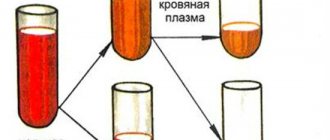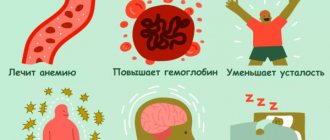Home — For the public
- Map of medical organizations
- Vaccination
- Clinical examination
- Fluorography
- Addresses and opening hours of clinics
- Emergency rooms
- Oncology
- Where to take an HIV test
- Healthy child's office
- Services
- Prevention of CVD
- Disease Prevention
- World Patient Safety Day
- Newspaper "Medical News"
- specialist
- School of Health
— Disease prevention
- HIV infection
- All about vaccination
- All about proper nutrition
- Hepatitis
- Flu
- Dementia
- Schoolchildren's health
- STD
- Tick-borne encephalitis
- Whooping cough
- Measles
- Legionellosis
- Meningococcal infection
- Oncology
- Acute intestinal infection
- Pediculosis
- First aid
- Pneumococcal infection
- Pneumonia
- Prevention of rabies
- Dependency Prevention
- Rotavirus infection
- Diabetes
- Cardiovascular diseases
- Injuries
- Tuberculosis
- Tularemia
- Physical activity
- Obstructive pulmonary disease
- Exotic infections
- Ecology
- Why is swimming in ponds dangerous?
— All about proper nutrition — B vitamins
B vitamins are compounds whose sources are plant or animal foods. Their role in the body is to regulate biological processes. Vitamin deficiency occurs with dietary restrictions, stress, acute or chronic diseases of the gastrointestinal tract and poses a health hazard.
B vitamins – role in the body
When answering the question of why B vitamins are useful, we should recall what functions they perform. These compounds act as enzyme activators; without them, important biological reactions cannot occur.
B vitamins:
- help absorb micro- and macroelements;
- come to the aid of the immune system;
- participate in the synthesis of protein, DNA, RNA and cell division;
- improve the condition of skin and hair;
- maintain hormonal balance;
- protect the body from anemia;
- help cope with stress and strain;
- support the functioning of the digestive, nervous, and cardiovascular systems.
B vitamins: where are they found and what do they affect?
Despite their diversity, all B vitamins have one thing in common: they help improve metabolism in the human body and normalize the functioning of the immune and nervous systems.
All these vitamins are water-soluble and are quickly eliminated from the body without accumulating in it. This means that it is necessary to replenish their reserves by taking special vitamin complexes and not forgetting about foods rich in these substances.
An important fact: doctors claim that taking B vitamins in combination has a much more noticeable effect than taking any one “variety” of B vitamins.
Therefore, let's figure out what we should eat in order to reinforce the body with useful substances, which B vitamins produce and what is remarkable about each of them.
B1 (thiamine) - energy vitamin
Benefit: Helps convert fats, proteins and carbohydrates into energy. Strengthens the nervous system and improves thinking abilities.
Contains: buckwheat and oatmeal, cereal shells, wholemeal bread, green peas, asparagus, pine nuts.
B2 (riboflavin) - beauty vitamin
Benefit: takes part in all metabolic processes of the body. Improves the condition of the skin, mucous membranes, nails and hair (hence the name “beauty vitamin”), is good for vision, and promotes the production of hemoglobin.
Contains: meat, offal (liver, kidneys), chicken eggs, mushrooms, cabbage (white cabbage, broccoli, etc.), pasta, white bread, refined rice, buckwheat, cottage cheese.
B3 (nicotinic acid, vitamin PP) - vitamin of synthesis and metabolism
Benefits: helps synthesize fats and proteins, promotes the production of energy from food, reduces the level of “bad cholesterol” in the blood. In addition, vitamin B3 helps normalize venous and blood pressure and stimulates the functioning of the cardiovascular system.
Contains: fish, milk, egg yolk, nuts, liver, kidneys, yeast, buckwheat, green vegetables, legumes, meat, potatoes.
B4 (choline) - a vitamin responsible for blood sugar
Benefits: this vitamin is important for the normal functioning of the nervous system and is useful for stress. In addition to its calming effect, B4 will help your thinking abilities. But most importantly, this vitamin regulates blood sugar levels. It also normalizes fat metabolism, which has a positive effect on your weight.
Contains: offal (kidneys, liver), egg yolk, dairy products (cheese, cottage cheese), cabbage, spinach, legumes, various unrefined vegetable oils, meat, fish.
B5 (pantothenic acid) - healing vitamin
Benefits: helps wounds heal faster, promotes the synthesis of antibodies, fatty acids, hemoglobin, and participates in the processes of cellular energy production.
Contains: poultry, fish roe, heart, liver, kidneys, yolk, buckwheat and oatmeal, green leafy vegetables, peas, hazelnuts, yeast.
B6 (pyridoxine) - vitamin for the nervous system
Benefit: participates in the regulation of the activity of the nervous system, the production of red blood cells, the synthesis of hemoglobin and antibodies, and promotes normal carbohydrate metabolism.
Contains: dairy products, fish, offal (kidneys, heart, liver), legumes, cereals, carrots, cabbage, spinach, potatoes, nuts (walnuts, hazelnuts), tomatoes, oranges, strawberries, yeast, wheat bran.
B7 (biotin, vitamin H, coenzyme R) - vitamin for beautiful skin
Benefits: restores health and beauty to skin and hair, is beneficial for bone and nerve tissue, regulates the activity of sweat glands.
Contains: yolk, liver, kidneys, yeast, tomatoes, soybeans, peanuts and other legumes, spinach, mushrooms, vegetables (cabbage, carrots, potatoes), dairy and meat products, fish.
B8 (inositol) – slimming vitamin
Benefits: helps reduce weight, participates in the regulation of cholesterol levels, protects against atherosclerosis, and is good for the brain.
Where it is contained: yeast, bran and wheat germ, offal (brain, heart), bread, green peas, oranges, raisins, citrus fruits, carrots.
B9 (folic acid, vitamin M) - women's vitamin
Benefit: indispensable for pregnant women, as it helps the fetus to develop properly. Children also need to take folic acid during their growth period. Vitamin B9 contributes to an easy pregnancy, as well as normalization of the emotional background before and after childbirth.
Contains: legumes, citrus fruits, yeast, liver, green leafy vegetables, nuts, yolk, fish, wholemeal flour, fruits (bananas, apricots, melon, oranges).
B12 (cobalamin) - anti-anemia vitamin
Benefit: participates in the processes of growth and activity of the nervous system, promotes the formation of red blood cells. Prevents the development of anemia.
Where it is contained: products of animal origin: meat, fish, poultry, offal, eggs, seafood.
B13 (orotic acid) - a vitamin for pregnant women
Benefits: promotes fetal development, has a beneficial effect on reproductive health, normalizes liver function.
Where it is contained: root vegetables, whey, cottage cheese, yeast, liver.
B17 (laetral) - anti-pain vitamin
Benefits: helps cope with pain, slows down the aging process, improves metabolic processes. Useful in the fight against cancer.
Where it is contained: seeds of fruits and berries (apples, plums, apricots, peaches, cherries).
Sources, role and symptoms of hypovitaminosis
B vitamins include: B1, B2, B3, B5, B6, B7, B9, B12. Previously, these included compounds B4 (choline), B8 (inositol). Levocarnitine has also been mistakenly called vitamin B11.
Vitamin B1 - thiamine
Takes part in the metabolism of carbohydrates and a number of amino acids, is important for the nervous, cardiovascular systems, and liver cells. Vitamin B1 is not synthesized in the body; it requires regular intake from food to meet its needs. They are rich in wheat sprouts, rye bread, various seeds and nuts, brown rice, legumes, and sea buckthorn berries. Animal sources include pork, chicken, salmon, and eggs.
Symptoms of vitamin B1 deficiency develop during fasting, unbalanced diet and manifest themselves in the form of severe neurological disorders (beriberi disease):
- pain in the calf muscles;
- decreased deep and cutaneous sensitivity of the legs and feet;
- paresthesia in the legs (tingling, goosebumps);
- sleep disturbances, emotional instability;
- decreased memory and mental performance.
In patients with anorexia and alcoholism, symptoms of B1 deficiency (acute Gaye-Wernicke encephalopathy, Korsakoff syndrome) can develop acutely. The clinic shows severe motor disturbances, visual disturbances, confusion, and psychotic symptoms. Without emergency help, a person can die within a few days.
Vitamin B2 - riboflavin
This is a source for creating enzymes that participate in the synthesis of vitamin B6 derivatives, reactions with acids, break down foreign and dangerous compounds, and are responsible for the state of hemoglobin in the body.
So it is necessary for:
- maintaining healthy skin, hair nails;
- formation of red blood cells and antibody proteins;
- regulation of reproductive function.
The main sources of B2 are food of animal origin - kidneys, liver, eggs. It is found in smaller quantities in porcini mushrooms and champignons, broccoli, almonds and cottage cheese.
Anorexia, vegetarianism, inflammatory diseases of the gastrointestinal tract, alcoholism, taking sulfur preparations or tranquilizers can provoke hypovitaminosis B2.
Its clinical manifestations are as follows:
- angular stomatitis (“jams”, ulcers in the corners of the mouth);
- dryness and cracks in the mucous membranes of the lips;
- glossitis (swelling, redness of the tongue);
- conjunctivitis or keratitis (red eyes, photophobia, decreased vision);
- dermatitis on the skin of the face (eyelids, nasolabial folds, ears, nose);
- weakness, fatigue, drowsiness;
- muscle pain and muscle weakness;
- anemia.
B3 - niacin
Other well-known names for the vitamin include nicotinic acid and vitamin PP. The substance takes part in cell division, protein synthesis, hormones, cellular respiration and many other processes. With the participation of this vitamin, steroid hormones and fatty acids are formed. In addition, B3 has a vasodilating effect, heals wounds, and reduces the concentration of cholesterol in the blood (primarily “dangerous” fractions).
The source of the vitamin is the essential amino acid tryptophan. Rich foods include: liver, tuna, turkey, brewer's yeast. You can also get B3 by adding whole grains to your diet: oats, rye, barley, wheat germ, peanuts.
Heat treatment reduces the vitamin content in food, and love for refined carbohydrates increases the need for it.
The unusual name “vitamin PP” is an abbreviation of two English words “preventive pellagra”, which means “preventing pellagra”. Signs of deficiency are described as a disease of the “three Ds”: diarrhea, dermatitis, dementia. They occur with prolonged hypovitaminosis. Clinical manifestations are more extensive and include:
- dermatitis, increased skin sensitivity to sunlight, baldness;
- walking impairment, neuritis, paralysis of limbs;
- weakness and fatigue, headaches;
- from the psyche: asthenia, sleep disturbances, aggression, dementia;
- heart damage - dilated cardiomyopathy.
Vitamin B5 - pantothenic acid
The biologically active substance is involved in the metabolism of proteins, fats and carbohydrates. It stimulates the adrenal cortex to increase the secretion of corticosteroids. The vitamin is involved in the synthesis of antibodies, normalizes lipid metabolism, and restores the integrity of the skin and mucous membranes.
A smaller part of B5 enters the body with food: egg yolk, yeast, milk, carrots, caviar, green salads. The main amount of the vitamin is synthesized by intestinal flora. This fact explains the occurrence of its deficiency against the background of long-term use of antibacterial or synthetic sulfonamide drugs and malabsorption syndrome. in which the absorption of substances is impaired.
Hypovitaminosis manifests itself in the form of metabolic disorders, damage to the digestive tract, skin and nail diseases, and weakened immunity.
Patients usually complain of:
- fatigue, headaches;
- deterioration of skin condition;
- low mood;
- muscle pain;
- numbness and pain in the feet;
- nausea, digestive disorders;
- frequent viral infections.
Vitamin B6 – pyridoxine
Participates in the formation of red blood cells and the hemoglobin they contain. Being a coenzyme of proteins that process amino acids (primarily in the nervous system) it helps cells properly utilize and consume glucose, preventing sudden surges in blood sugar. The effect on the body is to maintain physical and mental performance, ensuring trophic innervation of the nervous system.
Therefore, deficiency primarily manifests itself in the form of symptoms such as:
- depression, lethargy;
- decreased resistance to any load;
- numbness, paresthesia in the arms and legs;
- joint pain, arthritis;
- muscle weakness;
- “jams” in the corners of the mouth, hair loss.
Hypovitaminosis occurs against the background of an unbalanced diet (diet, alcoholism), taking the B6 antagonist drug ftivazid. An increase in the need for B6 is possible during antibiotic treatment, smoking, and hormonal contraceptive therapy.
Pyridoxine is found in green plants, nuts, tomatoes, strawberries, lemons, oranges, and legumes. Animal sources include eggs, liver, fish.
Hypervitaminosis occurs due to the consumption of large doses of B6 and is characterized by a decrease in protein concentration in tissues: weakness, confusion, convulsions. Scientists have proven that an overdose of this vitamin increases the risk of developing lung cancer in men.
Vitamin B7 - Biotin
Regulates all types of metabolism, participates in the synthesis of the structural protein collagen, and the transfer of carbon dioxide molecules. Contained in egg yolks, beef liver, bananas, brown rice, citrus fruits, apples, parsley. Most of the vitamin is synthesized by intestinal flora.
Biotin deficiency develops against the background of strict diets, taking antibiotics, using preservatives E221-E228, and alcoholism.
Signs of deficiency will be:
- anemia;
- dryness, flaking of the skin;
- dermatitis in the corners of the mouth;
- anorexia, nausea;
- weakness, apathy, increased drowsiness;
- high levels of fat and glucose in the blood.
Hereditary diseases associated with impaired vitamin metabolism are also possible. They manifest in the neonatal period or in older children. Among the alarming symptoms are seizures, delayed physical and mental development.
Vitamin B9 - folic acid
Responsible for cell growth and maintaining DNA integrity. The vitamin has an effect on the development of the nervous system and is involved in hematopoiesis. Folic acid enters the body with food and is synthesized by bacteria in the intestines. Sources of B9 - spinach, asparagus, broccoli, pork and chicken liver, legumes.
Vitamin deficiency is most dangerous during pregnancy, as there is a risk of miscarriage and deformities in the fetus. The risk group includes:
- women with folate metabolism disorders, when B9 is less absorbed by the body;
- pregnant women receiving treatment with valproic acid (anticonvulsant) drugs.
But hypovitaminosis is dangerous not only for special categories of people. An increased need for B9 occurs during therapy with anti-malaria drugs and cytostatics (Fansidar, Methotrexate).
You can suspect a vitamin deficiency if you have the following symptoms:
- infertility in men and women;
- early miscarriages;
- fetal development abnormalities;
- decreased mental performance;
- megaloblastic anemia (by blood test).
Substance B10 or para-aminobenzoic acid is a fragment of vitamin B9; its properties have not been fully studied, and there are no clinical studies on the need for prophylactic use.
Vitamin B12 - cyanocobalamin
It is absorbed and works only when taken with animal food or as part of medications in the small intestine. Cyanocobalamin is also produced by bacteria in the large intestine, but the body cannot absorb it.
The substance participates in the oxidation reactions of proteins and fats. Food sources of cyanocobalamin are pork, beef liver, herring, mackerel, eggs, cheese, cottage cheese.
A complete rejection of animal products that contain the vitamin leads vegans to the development of megaloblastic anemia. The following also suffer from vitamin deficiency:
- patients with diseases of the ileum, helminthiases (absorption is impaired);
- persons with Castle factor deficiency (produced in the stomach and activates B12).
Hypovitaminosis is associated not only with pathologies of hematopoiesis, but also with the destruction of the myelin sheaths of nerve fibers, and depressive syndrome in the elderly.
Multi B-complex for the nervous system/hair/nails tablet p/o N 30
Description
B vitamins are a whole group of water-soluble compounds that take part in all metabolic processes occurring in the body and contribute to the release of energy from various nutrients that contain calories.
All B vitamins have a common function - to improve metabolism in the body and normalize the functioning of the immune and nervous systems. Most of them have a beneficial effect on the condition of the skin, hair and nails. Moreover, the action of these vitamins in combination is much more effective than if you take any of the B vitamins separately. Excess water-soluble vitamins are quickly eliminated from the body without accumulating in it, so it is necessary to replenish their reserves by eating foods rich in these substances and taking supplements. Vitamin B1 (thiamine) can be synthesized in some quantities by normal intestinal microflora. Responsible for the transfer of information at the gene level, which occurs during cell division, strengthens the immune system, has anti-stress properties, takes part in almost all metabolic processes, and is necessary for the breakdown of simple carbohydrates. Takes part in the biosynthesis of acetylcholine, a mediator responsible for the transmission of impulses in the central nervous system, improves cognitive functions and memory ability, and ensures normal tone of the digestive tract and myocardium.
Vitamin B2 (riboflavin) is an antiseborrheic vitamin, enters the body with food and is produced by the microflora of the large intestine. The body needs it to create new nerve cells, form red blood cells, and absorb iron. Regulates the volume of hormone production by the adrenal glands. Riboflavin is essential for the health of the entire body, especially skin, hair and nails, protects cells from early aging and reduces the risk of heart disease.
Vitamin B3 (niacin) is the most stable compound of B vitamins. It ensures the activity of the central nervous system, stimulates the formation of red blood cells, increases the level of high-density lipoproteins in the blood, thereby reducing cholesterol levels and the risk of cardiovascular diseases. Helps lower blood pressure, treats some skin diseases (acne), participates in the biosynthesis of a number of enzymes, and is necessary for the production of hormones (including sex hormones and insulin).
Vitamin B4 (choline) is involved in fat and cholesterol metabolism. It is part of the myelin protective sheath of nerves and protects the human brain throughout life. Normalizes heart rhythm, restores liver tissue damaged by toxins and viruses, normalizes the functioning of the prostate gland, increases sperm activity, and prevents cholelithiasis.
Vitamin B5 (pantothenic acid) is involved in the breakdown of fats and carbohydrates, participates in tissue regeneration, improves skin condition, and reduces signs of aging. Necessary for the breakdown of lipids and carbohydrate compounds, the biosynthesis of neurotransmitters and antibodies.
Vitamin B6 (pyridoxine) is involved in the production of red blood cells, the synthesis of hemoglobin and antibodies in the regulation of the activity of the nervous system. Helps the body synthesize “sleep and stress” hormones - serotonin, melatonin and norepinephrine. Regulates the activity of several dozen enzymes, allows the body to absorb proteins and unsaturated fatty acids, improves the condition of the skin and nails.
Vitamin B7 (biotin) is a beauty vitamin. Returns health and beauty to skin, hair, nails, is beneficial for bone and nervous tissue, regulates the activity of sweat glands. Its action is aimed at improving our appearance.
Vitamin B8 (inositol) is a slimming vitamin. Helps reduce weight, protects against atherosclerosis, is good for the brain, and is involved in the regulation of cholesterol levels.
Vitamin B9 (folic acid) is involved in protein metabolism, is important for cell growth and division, for the transmission of hereditary information, and is needed for the synthesis of mediators for the transmission of nerve impulses and blood cells.
Vitamin B10 (para-aminobenzoic acid) has an anti-allergic effect, is a powerful antioxidant that has a beneficial effect on the health of skin, nails and hair, prevents premature skin aging and the formation of wrinkles, and protects against ultraviolet radiation. Takes part in hematopoiesis and thyroid function.
Vitamin B12 (cobalamin) - helps other B vitamins perform their functions. Participates in the processes of growth and activity of the nervous system, in the formation of red blood cells and hemoglobin. The main source of B12 is animal products, and if you do not consume enough of them, you can supplement the deficiency by taking supplements.
Indications
as a biologically active food supplement - an additional source of B vitamins (B1, B2, B3, B5, B6, B7, B9, B12), inositol, para-aminobenzoic acid containing choline. A dietary supplement is not a medicine.
Daily values of B vitamins
When answering the question of how much B vitamins you need to get, you need to take into account the characteristics of your environment, gender, age, the presence of certain diseases, and increased physical or emotional stress on the body. The table below shows average standards.
| Vitamin name | Need for children | Requirement for adults/mg/day |
| B1 | 0,2-0,9 | 2 |
| B2 | 0,4-1,8 | 1,5-2 |
| B3 | 2-12 | 20 |
| B5 | 1-5 | 4-6 |
| B6 | 0,2-1 | 1,3 -2 |
| B7 | 5-20 | 30 |
| B9 | 0,05-0,15 | 0,2-0,26 |
| B12 | 0, 0004-0,0018 | 0,0025 |
B vitamins are classified as water-soluble compounds. This means that it is almost impossible to “eat your fill” with them. Substances are not stored in adipose tissue, but leave the body. The likelihood of hypervitaminosis against the background of a balanced diet is low.
Excess may also develop in response to long-term use of synthetic drugs. The main manifestations of hypervitaminosis include:
- hyperemia of the skin;
- allergic reactions;
- diarrhea, abdominal pain;
- sleep disorders;
- cramps in the muscles of the arms/legs;
- headache.
B vitamins in clinical practice
THOSE.
Morozova , Doctor of Medical Sciences, Professor,
O.S.
Durnetsova , Candidate of Medical Sciences,
First Moscow State Medical University named after.
THEM. Sechenov The article discusses the role of B vitamins in the treatment of neurological diseases. The results of research and experience in using the combined drug Neuromultivit are covered.
Vitamins play an important role in the normal functioning of the body, as well as in the pathogenesis of certain diseases, many of which are indispensable participants in various metabolic processes. They are necessary for normal cellular metabolism and tissue trophism, normal performance and maintenance of vital functions of the body. A variety of reasons lead to vitamin deficiency, such as diseases of the gastrointestinal tract leading to malabsorption, malnutrition, alcoholism, metabolic disorders, etc. Currently, more than 30 vitamins and vitamin-like substances are known. Most of them are coenzymes of various enzymes and are involved in the regulation of carbohydrate, protein, fat and mineral metabolism, in maintaining cellular structure, and the body’s resistance to adverse environmental factors [1].
Vitamins are divided into fat-soluble (vitamins A, D, E and K) and water-soluble (B vitamins and vitamin C). The absence of any of them leads to insufficient formation of certain vital enzymes in the body and, as a consequence, to a specific metabolic disorder. Thus, it is well known that retinol (vitamin A) plays an important role in the processes of growth, reproduction, and visual function; vitamin K is necessary for the synthesis of coagulation factors II, VII, IX and X in the liver and has antihemorrhagic properties; vitamin D regulates the mineralization of bone tissue, increases the permeability of the intestinal epithelium to calcium and phosphates, B vitamins are neurotropic and are used for diseases of the nervous system, etc. [2].
Clinical symptoms and manifestations of hypovitaminosis are diverse and can affect various organs and systems ( Table 1
). Since most vitamins are not synthesized in the body, and it is impossible to compensate for their deficiency using only food, vitamin medications are of great importance. They are widely used for prevention and as part of complex therapy for diseases of various human organs and systems [1]. Currently, vitamin complexes are increasingly used to correct functional states and increase human reserve capabilities in various clinical situations [3].
Table 1. Clinical manifestations and symptoms of hypovitaminosis
| Vitamin deficiency | Clinical manifestations and symptoms |
| A (retinol) |
|
| B1 (thiamine) |
|
| B2 (riboflavin) |
|
| B6 (pyridoxine) |
|
| B12 (cyanocobalamin) |
|
| C (ascorbic acid) |
|
| E (tocopherol) |
|
| D |
|
| K |
|
| Lack of vitamin PP (nicotinic acid) |
|
In this review, we will dwell in more detail on the pharmacological aspects and clinical possibilities of using B vitamins.
B vitamins
B vitamins occupy an important place in clinical practice.
They are used in a variety of fields of medicine in various categories of patients, but they are most widely used in the treatment of diseases of the peripheral and central nervous system. B vitamins are considered neurotropic, because they are necessary for the normal functioning of the central and peripheral nervous system. B vitamins have a metabolic effect on axonal transport and myelination processes in peripheral nerve fibers. Among all the B vitamins, these properties are most characteristic of three of them - thiamine (B1), pyridoxine (B6) and cyanocobalamin (B12). The effect of B vitamins, primarily thiamine, on the central nervous system is mediated through the metabolism of gamma-aminobutyric acid (GABA) and serotonin, which also provides an analgesic effect that manifests itself when used in high doses. The main physiological effects are summarized in Table 2
[4—6].
Table 2. Physiological effects of B vitamins
| Vitamin B1 (thiamine) | Vitamin B6 (pyridoxine) | Vitamin B12 (cyanocobalamin) |
| It is a coenzyme of many reactions. Participates in: - dihydrogenase complexes of the Krebs cycle - regulation of the activity of the pentose phosphate cycle of carbohydrate utilization - conduction of nerve impulses - ensuring axonal transport that determines the regeneration of nervous tissue - modulation of neuromuscular transmission in H-cholinergic receptors (synthesis of norepinephrine) - regulation of pain » nerve activity | It is a cofactor of more than 100 enzymes. Participates in: - deamination, transamination, decarboxylation of amino acids - phosphorylation of glycogen - folic acid metabolism - biosynthesis of neurotransmitters (dopamine, norepinephrine, adrenaline, histamine) - ensuring inhibition processes in the central nervous system - CNS (synthesis of gamma-aminobutyric acid ) - regulation of energy processes in nervous tissue Promotes the accumulation of magnesium in cells | Activates folic acid Participates in: - hematopoiesis and erythropoiesis (prevention of neuroanemic syndrome) - stimulation of nucleic acid metabolism - synthesis/restoration of the myelin sheath - cell growth replication processes - activation of the blood coagulation system - regulation of gastrointestinal tract function Has an analgesic effect Reduces neurogenic pain (reduces glutamate synthesis in the central nervous system) |
It should be emphasized that vitamin B1 (thiamine) is necessary for the oxidative decarboxylation of keto acids (pyruvic and lactic), the synthesis of acetylcholine, it is involved in carbohydrate metabolism and related energy, fat, protein, water-salt metabolism, has a regulatory effect on trophism and activity of the nervous system. With insufficient intake of thiamine, pyruvic and lactic acids accumulate in tissues, the synthesis of acetylcholine is disrupted, as a result of which the functions of a number of systems, primarily the nervous, cardiovascular and digestive ones, deteriorate. Thiamine optimizes cognitive activity and brain function. It has a positive effect on energy levels, growth, normal appetite, learning ability and is essential for muscle tone in the digestive tract, stomach and heart. Thiamine acts as an antioxidant, protecting the body from the destructive effects of aging, alcohol and tobacco.
Vitamin B6 (pyridoxine) is involved in the synthesis of a number of neurotransmitters. In phosphorylated form, it provides the processes of decarboxylation, transamination, deamination of amino acids, participates in the synthesis of protein, enzymes, hemoglobin, prostaglandins, the metabolism of serotonin, catecholamines, glutamic acid, GABA, histamine, improves the use of unsaturated fatty acids, reduces cholesterol and lipids in the blood, improves myocardial contractility, promotes the conversion of folic acid into its active form, stimulates hematopoiesis.
The most important property of vitamin B12 (cyanocobalamin) is its participation in hematopoiesis and erythropoiesis (prevention of neuroanemic syndrome) and activation of the blood coagulation system. In addition, like two other B vitamins, it is involved in the synthesis/regeneration of the myelin sheath and has an analgesic effect in neurogenic pain syndrome (reduces the synthesis of glutamate in the central nervous system).
Each of these vitamins can be used as monotherapy, but a combination of B vitamins (B1, B6, B12) has a more pronounced effect, since B vitamins can complement each other’s effects in the biochemical processes of nervous tissue [7, 8].
A wide area of application of drugs containing B vitamins is various pain syndromes. There is extensive experience in using them in cases of both nocioceptive and mixed pain of medium and low intensity, in the treatment of neuropathic pain, as a preventive treatment after relieving exacerbation of chronic pain, and in polyneuropathies of various origins. High doses of B vitamins have a positive effect on nerve regeneration, which justifies their use in the relief of acute pain syndrome and for the prevention of exacerbations of chronic pain [7, 9].
The optimal route of administration of B vitamins is oral. The use of parenteral forms may be complicated by the development of infiltrates and inflammatory reactions at the site of drug administration.
One of the drugs for oral administration containing a combination of the 3 B vitamins listed above in high doses is Neuromultivit (Lannacher, Austria), which is widely used in the practice of neurologists and endocrinologists. It contains 3 B vitamins in therapeutic doses (100 mg of thiamine hydrochloride, 200 mg of pyridoxine hydrochloride and 200 mcg of cyanocobalamin (vitamin B12). The absence of unwanted interactions between the components determines the generally good bioavailability of the drug. The components of the drug Neuromultivit are water-soluble vitamins, which eliminates the possibility of their cumulation in the body. Thiamine and pyridoxine are absorbed in the upper intestine, the degree of absorption depends on their dose. The absorption of cyanocobalamin is largely determined by the presence of an internal factor in the stomach and upper intestine, and further delivery of cyanocobalamin to the tissues is carried out by the transport protein transcobalamin II . Thiamine, pyridoxine and cyanocobalamin are metabolized in the liver. Thiamine and pyridoxine are excreted by the kidneys (about 8-10% unchanged). In case of overdose, the excretion of thiamine and pyridoxine through the intestines significantly increases. Cyanocobalamin is excreted mainly in bile, the degree of excretion by the kidneys is variable - from 6 to 30% [1, 3].
The use of B vitamins in neurological practice
As already noted, B vitamins are neurotropic substances.
Due to their active participation in biochemical processes that ensure the normal functioning of the structures of the nervous system, they are used in diabetic polyneuropathy and in the treatment of pain syndromes. Combined preparations of B vitamins are also used for complex therapy of pain syndromes [10]. In the practice of a doctor in almost any specialty, patients with dorsalgia or, in other words, with pain syndrome (PS) in the back area, are quite often encountered, the proportion of which is growing. The incidence of BS is quite high. Epidemiological studies have shown that on average 60-70% of the population have experienced acute back pain at least once in their lives, and in a third, the nature of the pain changes and becomes chronic. Often, pain syndrome occurs at a young age and subsequently accompanies the patient throughout his life. Moreover, among pain neurological syndromes of nociceptive origin caused by damage to the muscular system, myofascial pain has taken one of the first places in recent years [11].
The quality of life of these patients largely depends on timely, correctly selected and adequate pharmacotherapy. Inadequate treatment often leads to chronic pain syndrome. It is no secret that a large number of patients self-medicate, trying to reduce the severity of pain by taking painkillers and nonsteroidal anti-inflammatory drugs (NSAIDs).
Another possible cause of pain is various polyneuropathies. Among all types of neuropathies, diabetic polyneuropathy firmly ranks first, significantly ahead of other types of neuropathies (alcoholic, mixed origin, inflammatory, toxic, etc.), and the proportion of such patients is very large in general clinical practice [12].
The tactics of managing patients with pain syndrome involves the use of non-drug and drug treatment methods, the main goal of which is to relieve the pain syndrome or, at a minimum, reduce its severity. The therapy is also aimed at treating the underlying pathological process that led to the formation of the pain syndrome and improving the patient’s quality of life.
During the period of exacerbation, it is necessary to adhere to a gentle regime of physical activity and limit stress. Physiotherapy, manual therapy, acupuncture, and physical activity aimed at strengthening the muscle corset and stretching certain muscles or muscle groups are used. Non-drug recommendations also include recommendations for changing the patient’s habits, developing the “right” skills, teaching muscle relaxation techniques, correcting posture, teaching weight lifting techniques, and performing certain types of physical activity.
For pharmacotherapy of acute and chronic pain syndrome, it is possible to use various classes of drugs, which include B vitamins, both in monotherapy and in combination with each other ( Table 3
): - NSAIDs, - B vitamins, - muscle relaxants, - chondroprotectors, - antidepressants, - anticonvulsants, - selective serotonin reuptake inhibitors (SSRIs), - blockade with local anesthetics (in severe cases), - narcotic analgesics [11].
Table 3. Differentiated approach to pain therapy
| Nociceptive pain | Neuropathic pain |
| NSAIDs | |
| non-narcotic analgesics | |
| Narcotic analgesics (for severe pain) | |
| B vitamins | |
| Muscle relaxants | |
| chondroprotectors | |
| antidepressants | |
| anticonvulsants | |
| SSRIs | |
| Novocaine blockades | |
The pathogenetic basis for choosing a drug for the treatment of pain is based on knowledge, on the one hand, of the main pathophysiological mechanisms of its formation, and on the other, the mechanisms of action of the drug.
Since back pain is often mixed in nature with the participation of nociceptive and neuropathic components, it is advisable to prescribe both NSAIDs, which have a greater effect on the nociceptive component, and B vitamins, which affect the neuropathic component.
It is known that for various pain syndromes, B vitamins are often used to relieve it, which can have their own analgesic effect, and also enhance the analgesic effect of NSAIDs. Numerous studies have proven that under the influence of B vitamins, patients with acute back pain experience clinical improvement.
The analgesic effect of B vitamins has been known in medicine for a long time. As many years of clinical experience show, intramuscular administration of a combination of thiamine, pyridoxine and cyanocobalamin helps relieve pain, normalizes reflex reactions, and reduces sensitivity disorders. The mechanism of this action lies primarily in the inhibition of nociceptive responses. The antinociceptive effect of the combined vitamin complex may be due to inhibition of synthesis and/or blocking the action of inflammatory mediators. Clinically and in experimental models, it has been shown that co-administration with B vitamins enhances the analgesic effect of non-steroidal anti-inflammatory drugs, the anti-allodynic effect of gabapentin, dexamethasone and valproate in neuropathies [10].
Considering these properties of B vitamins, the main indications for the use of Neuromultivit are various diseases and lesions of the nervous system with pain syndromes:
- polyneuropathy; - neuritis; neuralgia; trigeminal neuralgia; - radicular syndrome caused by degenerative changes in the spine; sciatica; lumbago; - plexite; intercostal neuralgia; - paresis of the facial nerve.
Experience in using the combination drug Neuromultivit
The clinical effectiveness and good safety profile of the drug Neuromultivit for various diseases have a large evidence base, including meta-analyses [5, 13-16].
In recent years, there has been a fairly large number of works reflecting the experience of using the complex drug Neuromultivit in different categories of patients. These are mainly patients with neuropathies of various origins (diabetic, alcoholic) and pain syndromes in the back (dorsalgia). In patients with diabetes and endocrine neuropathy, positive dynamics with the use of Neuromultivit is expressed in the form of improved vibration and tactile sensitivity, reduced pain and increased quality of life in patients with DPN [14-16].
The results of a large number of studies of the drug Neuromultivit indicate a good safety profile and good tolerability of the drug by most patients. A Cochrane systematic review, including the results of 30 studies involving 741 patients with alcoholic and endocrine neuropathy, convincingly demonstrated that B vitamins were well tolerated in clinical studies [17–19].
In isolated cases, side effects may appear, most often associated with an overdose of the drug components, manifested by nausea, palpitations, and sometimes skin reactions develop in the form of itching and urticaria. Overdose is only possible if extremely high doses are taken for a very long time.
There are restrictions on the use of the drug during pregnancy and lactation.
Since Neuromultivit contains therapeutic doses of vitamins, it is not recommended to combine it with other B vitamins. Clinical symptoms of an overdose of vitamins contained in the Neuromultivit drug are possible only if the recommended doses are significantly exceeded, mainly due to vitamin B6 (if its dose is more than 2 g per day ). In this case, there is a risk of developing neuropathy with ataxia and sensory disturbances, seizures with EEG changes, in some cases hypochromic anemia and seborrheic dermatitis. Treatment is symptomatic.
Issues of contraindications to the prescription of certain drugs are important in the practice of any doctor. This fully applies to vitamin preparations. The practicing physician must have detailed information about who can and cannot be prescribed vitamin preparations. Very often this question concerns patients with tumor processes of both benign and malignant nature. Research results demonstrate weak anticarcinogenic activity or the absence of any effect on tumor growth of vitamins in physiological doses [20-24]. A number of studies have demonstrated the safety of taking vitamins, including B vitamins, in cancer patients [25-27]. Also, B vitamins can be part of complex maintenance therapy during or after chemotherapy [28].
Thus, the complex drug Neuromultivit can be recommended for use as part of complex therapy for pain syndromes of various origins, for manifestations of polyneuropathy of various origins (including alcoholic and diabetic polyneuropathy) and even in some cases as part of maintenance therapy for cancer patients. It is also widely used in neurological practice in the complex treatment of patients suffering from neuritis, neuralgia, sciatica, lumbago, as well as radicular syndrome, which is caused by degenerative changes in the spine, plexitis, intercostal neuralgia, facial paresis and trigeminal neuralgia.
Neuromultivit can be prescribed as part of complex therapy in combination with NSAIDs, muscle relaxants, and various non-drug therapies, enhancing their analgesic effect. The drug can also be used as maintenance therapy after discontinuation of NSAIDs to reduce the risk of relapse and chronic pain.
Literature
1. Clinical pharmacology: national guidelines. Ed. Yu.B. Belousova, V.K. Lepakhina, V.I. Petrova. M.: GEOTAR-Media, 2008. (Series “National Guides”, chapter 37). 2. Fauci AS, Braunwald E, Isselbacher KJ. Harrison's principles of internal medicine14th edition, 1998. Chapter 79: Vitamin deficiency and excess. P. 480-7. 3. Shikh E.V. Clinical and pharmacological aspects of the use of vitamin preparations in the clinic of internal diseases. Ministry of Health of the Russian Federation. Gazette of the Scientific Center for Expertise and State Control of Medicines. 2001, 1 (5): 46-52. 4. Leninger A.L. Fundamentals of biochemistry. Per. from English T. 1, 2, 3. M.: Mir, 1985. 5. Kozelkin A.A., Kuznetsov A.A., Medvedkova S.A. Application of neuromultivit in neurological practice. Therapia, 2008, 11(31): 1-5. 6. Akhmedzhanova L.T., Solokha O.A., Strokov I.A. B vitamins in the treatment of neurological diseases. RMJ, 2009, 17(11): 776-83. 7. Strokov I.A. The use of high doses of B vitamins in neurology. I.A. Strokov, L.T. Akhmedzhanova, O.A. Solokha. Difficult Patient, 2009, 10: 17-22. 8. Becker KW, Kienecker EW, Dick P. A contribution to the scientific assessment of degenerative and regenerative processes of peripheral nerves following axonotmesis under the systemic administration of vitamins B1, B6 and B12 – light and electron microscopy findings of the saphenous nerve in the rabbit. Neurochirurgia (Stuttg.), 1990, 33(4): 113-121. 9. Lutsky I.S., Lyutikova L.V., Lutsky E.I. B vitamins in neurological practice. Int. Neurol J., 2008, 2: 89-93. 10. Danilov A.B. The use of B vitamins for back pain: new analgesics? RMJ, 2008, 16: 35-9. 11. Vyalov S.S. Patients with lumbar neuralgia: features of treatment for lumbar syndrome. Polyclinic Physician's Handbook, 2013, 12: 16-22. 12. Doskina E.V. Diabetic polyneuropathy and B12 deficiency conditions: basics of pathogenesis, ways of treatment and prevention. E.V. Rumyantseva. Farmateka, 2011, 20: 1-6. 13. Zhirov I.V. Experience with the use of the drug Neuromultivit for alcoholic polyneuropathy. I.V. Zhirov, M.A. Fedina, A.B. Pokrovsky. New Drugs, 2002, 12: 10-18. 14. Gurevich K.G. Neuromultivitis: application in modern practice. Pharmatheka, 2004, 9-10: 48-51. 15. Tokmakova A.Yu. Possibilities of using Neuromultivit in complex therapy of polyneuropathy in patients with diabetes mellitus. A.Yu. Tokmakova, M.B. Antsiferov. Diabetes Mellitus, 2001, 11(2): 33-35. 16. Bregovsky V.B. Application of Neuromultivit in patients with chronic diabetic sensorimotor polyneuropathy of the lower extremities. V.B. Bregovsky, E.V. Belogurova, V.A. Kuzmina. New Drugs, 2002, 6: 7-10. 17. Ang CD, Alviar MJ, Dans AL et al. Vitamin B for treating peripheral neuropathy. Cochrane Database Syst Rev., 2008, 16(3). 18. Peters TJ, Kotowicz J, Nyka W et al. Treatment of alcoholic polyneuropathy with vitamin complex: a randomized controlled trial. Alcohol & Alcoholism, 2006, 41(4): 636-642. 19. Golovacheva V.A. Treatment of diabetic and alcoholic polyneuropathy: possibilities and prospects of pharmacotherapy. V.A. Golovacheva, I.A. Strokov. RMJ, 2014, 16: 1193-1197. 20. Den Heijer M. Are B. Vitamins a risk factor for VTE? Perhaps. J Thromb Haemost., 2006, Feb., 4(2): 309-11. 21. Krishnan AV, Moreno J, Nonn L et al. Novel pathways that contribute to the anti–proliferative and chemopreventive activities of calcitriol in prostate cancer. J Steroid Biochem Mol Biol., 2007, Jan. 15. 22. Lajous M, Lazcano-Ponce E, Hernandez-Avila M et al Folate, vitamin B(6), and vitamin B(12) intake and the risk of breast cancer among Mexican women. Cancer Epidemiol Biomarkers Prev., 2006, Mar.15(3): 443-448. 23. Lajous M, Romieu I, Sabia S et al. Folate, vitamin B12 and postmenopausal breast cancer in a prospective study of French women. Cancer Causes Control, 2006, Nov., 17(9): 1209-1213. 24. Xu WH, Dai Q, Xiang YB, Zhao GM et al. Nutritional factors in relation to endometrial cancer: A report from a population–based case–control study in Shanghai, China. Int J Cancer, 2007, Jan. 17. 25. Nascimento MM, Suliman ME, Murayama Y et al. Effect of high-dose thiamine and pyridoxine on advanced glycation end products and other oxidative stress markers in hemodialysis patients: a randomized placebo-controlled study. J Ren Nutr., 2006, Apr., 16(2): 119-124. 26. Bjelakovic G, Nikolova D, Simonetti RG, Gluud C. Antioxidant supplements for preventing gastrointestinal cancers. Cochrane Database Syst Rev., 2004, Oct., 18(4): CD004183. Evid Based Nurs., 2005, Apr., 8(2): 48. 27. Reynolds E. Vitamin B12, folic acid, and the nervous system. Lancet Neurol., 2006, Nov., 5(11): 949-960. 28. Gromova O.A. Clinical pharmacology of vitamin B12. Evidence-based research. Pediatric Practice, 2006, 3: 20-24.







